Speech tips for Cleft Lip and/or Palate
Speech tips for Cleft Lip and/or Palate
Speech is the key to human existence. It bridges the difference and helps to give meaning and purpose to life. Speech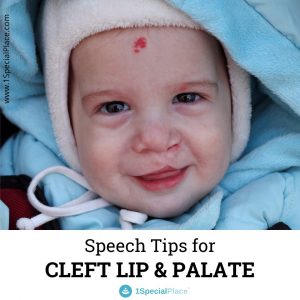 production is a complex process involving multiple processes. Communication is said to be complete when the speaker expresses a message and conveys it to the listener. But what if the expressed message sounds gibberish or less intelligible? One of the causes of unclear or unintelligible speech is Cleft lip and/or palate (CL/P). It is a congenital condition affecting primarily the formation of lip and palate, which needs immediate medical management followed by rehabilitative support to be able to live life without affecting the quality of your life. The most important rehabilitation needed for children with CL/P is none other than speech therapy because the condition affects vegetative skills and speech impairment and sometimes even language impairment.
production is a complex process involving multiple processes. Communication is said to be complete when the speaker expresses a message and conveys it to the listener. But what if the expressed message sounds gibberish or less intelligible? One of the causes of unclear or unintelligible speech is Cleft lip and/or palate (CL/P). It is a congenital condition affecting primarily the formation of lip and palate, which needs immediate medical management followed by rehabilitative support to be able to live life without affecting the quality of your life. The most important rehabilitation needed for children with CL/P is none other than speech therapy because the condition affects vegetative skills and speech impairment and sometimes even language impairment.
Goals for a Child with Cleft Lip &/or Palate (Post Surgical Correction)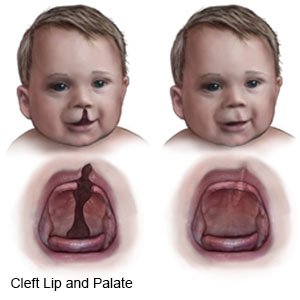
-
Establish correct articulation (placement, manner, and voicing) using articulation therapy techniques.
This goal includes a lot of skills that have to do with getting the mouth to do the correct thing to produce speech sounds. Most of the time the kids with CL/P have nasal air emission which is nothing but excess air emission through the nose. We can target getting the articulators (tongue, lips, etc.) in the right places, keeping the air flowing out the mouth instead of the nose (unless it’s a nasal sound), and building up air pressure to produce certain sounds (like /p/ and /b/).
-
Ensure there is good oral pressure during sound production.
Children with cleft lip and palate often have trouble building up air pressure to produce speech sounds. This may be from structural problems that still exist (like holes in the palate) or it may be due to habits that the child learned when there were structural problems even though those problems have since been fixed. An SLP can help children to build up the air pressure for speech sounds as best as they possibly can be based on their current structures and limitations.
-
Establish new motor speech patterns that replace speech sound errors.
When children with unrepaired cleft lip and palate learn to speak, they tend to compensate for structural problems by either putting their articulators in the wrong positions or replacing difficult sounds with easier ones. After the clefts are repaired, these children often still use those errors because of the habits they have formed. A speech therapist can help to un-learn those incorrect ways to say speech sounds and learn the correct ways instead.
What can be done ?? – Some general tips:
- Give special names to sounds to make it easy for the child to understand and discriminate. Mouth sound – for oral target, nose sound – nasal emission or even nasal sound likewise depending on the target sound we can give names like throat sound, voice box sound, etc.
- Verify the auditory and visual discrimination skills for error versus target sounds.
- Use correct placement cues and imitation to establish an oral place of production and to get the target sound into the inventory
- Make sure to incorporate auditory, visual, and tactile teaching and learning strategies. Multimodal stimulation helps more compared to anyone’s modality.
-
Here’s a strategy that can be followed to get the target sound /s/ corrected in a child with CL&/or P :
- Have the child produce a loud /t/ sound repetitively.
- Then ask the child to produce the /t/ with teeth closed which will result in /tssss/.
- Increase the duration of the production until it becomes /tssss/.
- Have the child note the position of the tongue and the airstream flowing over the tongue during production.
- Finally, eliminate the tongue tip movement for the /t/ component.
-
For /ʃ/ as in shop, /tʃ/ – as in chair and /dʒ/ as in jeep
- Start with /tʃ/ because this sound contains a /t/. Follow the same procedures as noted above for /s/, but keep the lips rounded. Also, have the child try to produce this sound like a loud sneeze with teeth closed.
- Once the /tʃ/ is mastered, follow steps (4) and (5) of the sound /s/ sound to achieve /ʃ/.
-
Straw technique:
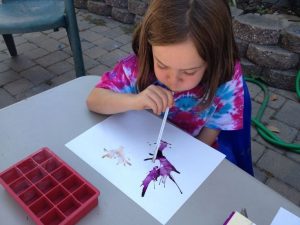
- Place a straw at the point of your own central incisors during the production of a sibilant sound. Note the sound of the airflow through the straw.
- Have the child put the straw in front of his incisors and try to produce the sound until he/she can hear the airflow through the straw. This will help the child to channel the airflow through the oral tract for oral target sounds.
** Can be made fun if you splash some watercolors in a sheet of paper and then practice the target sound through your mouth, through the straw. This will then spread the color across and then it will be a visual reinforcer.
-
For Learned Nasal Emission: you may occlude the nostrils to facilitate learning to redirect the airflow orally
- Once the child can make the correct target and has the sound in his inventory, PRACTISE the new target in syllable drills and other contexts progressing from simple to complex contexts.
- Incorporate Self- monitoring practice into all speech contexts – syllable through connected speech.
Alternative Augmentative Communication (AAC) – An alternative
Some children with cleft lip and palate will have a difficult time communicating with those around them due to the limitations of their oral structures and functions. If you are working with a child who has a highly unintelligible speech or is becoming frustrated by the fact that others can’t understand him, you can always look for alternative or back-up ways for that child to communicate when his speech isn’t quite enough.
This doesn’t mean that we are giving up on speech altogether, we’re just putting a back-up plan in place in case the child needs it. Following are some ideas of alternative communication that may be used to assist the child:
- Teaching the child to use gestures, body language, and “acting it out” to get their message across
- Teaching the child some sign language to help him communicate
- Giving the child a board or book full of pictures that he can point to
- Giving the child a device that will allow him to push a button that will speak the message he’s trying to get across.
How Parents can help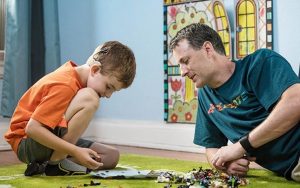
Speech therapy should begin as soon as possible. Children who start speech therapy early tend to have greater success. Therapy also can help older kids, but their progress can be slower because their motor patterns are more conditioned by now.
Support from parents is key to the success of a child’s progress in speech therapy. Various studies prove that family members who are very supportive and engaging have long-lasting results in their child.
Follow the guidelines given by your speech therapist for you and your child to do after each session. Helping your child complete these activities will ensure continued progress and carryover of new skills. This means to say that practicing P sound for 30 minutes a week in therapy is much more effective when it’s also done for 10 minutes a day at home.
The process of overcoming a speech or language disorder can take some time and effort. So all family members must be patient and understanding.
If you wish to know more about Speech Therapy, kindly contact us at info@1specialplace.com
For more ideas check out our other related blogs
View this post on Instagram
- Speech and Hearing Rehabilitation for Children with Cochlear Implant - September 4, 2021
- Stuttering Recovery and Relapse in Children: Parental Guide - August 12, 2021
- Myths About Stuttering : Explained - April 18, 2021

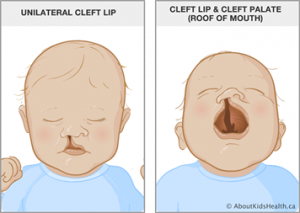
Leave a Comment
(0 Comments)